Art Spiegelman
Words and Pictures Collide: What the %@&*! Happened to Comics?
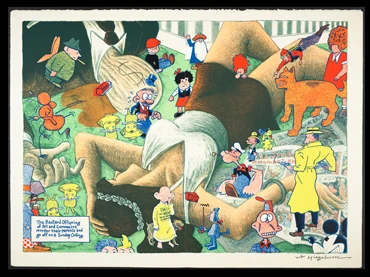
Art Spiegelman. Lead Pipe Sunday, The Bastard Offspring. Illustration, 1990
Held on 20 Dec 2017
In conjunction with the exhibition George Herriman. Krazy Kat is Krazy Kat is Krazy Kat, the Museo Reina Sofía will devote a lecture to the artistic medium of comics, and its own language, at once mature and autonomous. The activity features a carefully considered presentation of the graphic novel by theorist and cartoonist Santiago García, followed by a lecture given by Art Spiegelman, the only cartoonist to win the Pulitzer Prize to date. The creator of Maus (written between 1986 and 1991) will share his vision of the comic as a battle zone defining “post-literary times”, where art and commerce, high-brow and popular culture, the young and old, reality and fantasy and, overall, words and images collide with added intensity.
Throughout its trajectory, the comic has been linked in different ways to the museum institution and to modern and contemporary art. Avant-garde artists in the past, such as Juan Gris and Lyonel Feininger, produced illustrations and comic strips which were widely considered minor works at the time; Pop Art made use of the medium’s iconography, appearance and production, giving expression to elite paintings which catered to mass tastes; and finally, the discernible influence in the work of visual artists from different decades and wide-ranging career arcs — Philip Guston, Martin Kippenberger and Michel Majerus — who sought to revamp or question the pictorial medium. The three circumstances mentioned, understood through traditional historiography as channels of legitimacy, have determined a paradoxical notion of the comic as an appendix which reinforces the dominant role of painting in the old hierarchy of the arts. This lecture, therefore, seeks to break away from this idea, instead viewing the comic as a medium in its own right, and setting forth the consideration that, if film was the great art form of the 20th century, then comics were the privileged written form of the same century. Thus, value is placed on a writing style shaped by the symbiotic mix between image and word, iconic and verbal registers, largely anticipating the visual elements of the Internet; a decidedly mainstream, mass and pedagogical vocation; and a sequential construction of narrative. In melding these three elements, comics have given expression to a bona fide factory of modern myths and fables, granting exposure to a whole series of artists — George Herriman, Winsor McCay, Robert Crumb, Art Spiegelman, Marjane Satrapi, Alison Bechdel and Chris Ware — who have demonstrated their unparalleled talent for revealing the power of images.
In collaboration with
Organised by
Museo Reina Sofía
Participants
Santiago García (Madrid, 1968). Cartoon scriptwriter, critic and translator. With a PhD in Art History, he is the author of the essay La novela gráfica (Astiberri, 2010) and has written comics such as El Vecino (Astiberri, 2004-2010), with illustrations by Pepo Pérez, and the work Las Meninas (Astiberri, 2014), with Javier Olivares, which won Spain’s National Comic Award in 2015 and the Award for the Best Work by a Spanish Author at Barcelona’s Comic-Con 2015. His latest work Museomaquia (Astiberri, 2017), with drawings by David Sánchez, looks back over the history of painting, from Medieval times to the present day via a Venetian horseman and his squire.
Art Spiegelman (Stockholm, 1942). Cartoonist. Spiegelman studied Art and Philosophy at Binghamton University’s Harpur College, in New York, before he became part of the underground comics subculture in the 1960s and 1970s, depicted in his anthology Breakdowns (Bélier Press,1977). In 1980, alongside his wife Françoise Mouly, he founded RAW, the acclaimed avant-garde comics magazine. Since then he has published his work in an array of magazines, including The New Yorker, where he worked as a contributing artist from 1993 to 2003. In 1992, he won the Pulitzer Prize for his comic Maus: A Survivor's Tale (Pantheon Books, 1991), based on the Holocaust, and other works of note include In the Shadow of No Towers (Viking Press, 2004) on 9/11. He was also awarded the Grand Prix de la Ville d’Angoulême (2011) and became a member of the American Academy of Arts and Letters in 2015.

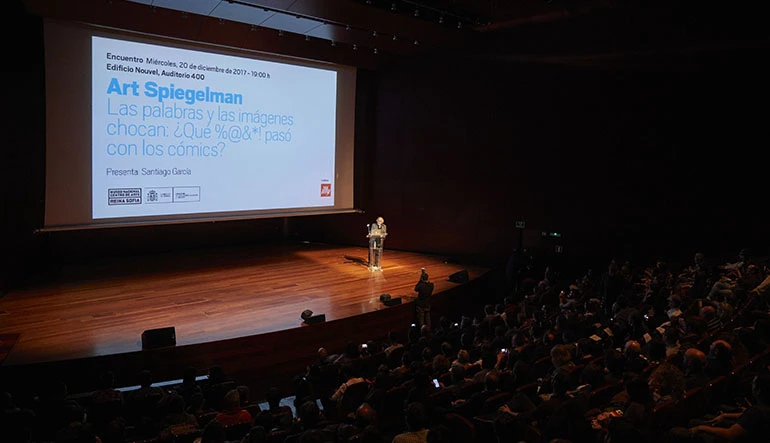
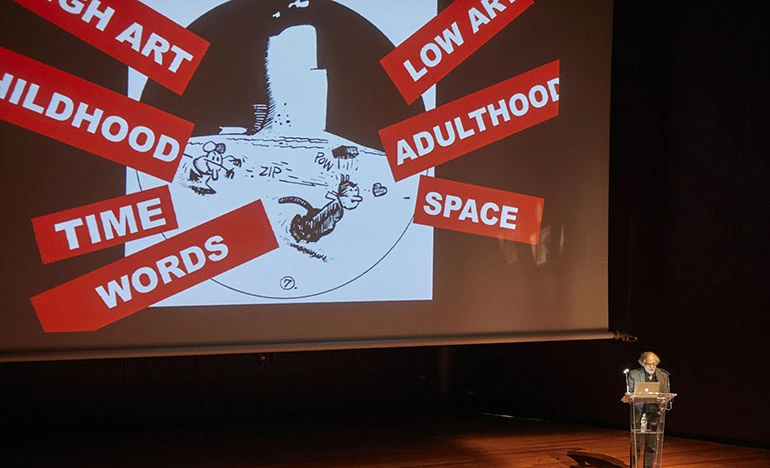
Más actividades

CLINIC 2628. A Community of Writing and Research in the Arts
February – October 2026
Clinic 2628 is a project which supports and brings together writings which stem from the intention to offer a space and sustainable time for research work in art and culture. Framed within an academic context which is increasingly less receptive to the forms in which thinking happens and is expressed, the aim is to rescue the academic from its neoliberal trappings and thus recover the alliance between precision and intuition, work and desire. A further goal is to return writing to a commons which makes this possible through the monitoring of processes and the collectivisation of ideas, stances, references and strategies.
The endeavour, rooted in a collaboration between the Museo Reina Sofía’s Studies Directorship and the Artea research group, via the i+D Experimenta project, is shaped by three annual editions conceived as spaces of experimentation, discussion and a demonstration of writings critical of what is put forward by today’s academia.
What forces, forms and processes are at play when writing about art and aesthetics? In academia, in museums and in other cultural institutions, the practice of writing is traversed by productivist logics which jeopardise rhythms of research and experimentation. The imposition of both scientism inherent in the structure of “the paper” and the quantifying of results which demand a criterion of quality and visibility sterilise and smoothen, from the outset, the coarseness that is particular to writing understood from the concrete part of language: phonic, graphic, syntactic and grammatical resistance connecting the language user to the community the language unites and activates. They also sterilise the roughness enmeshed in the same desire to write, the intuitive, clear and confusing pathways that once again connect the writer to those reading and writing, participating in a common good that is at once discovered and produced.
The progressive commercialisation of knowledge propelled by cognitive capitalism moves further away from the research and production of knowledge in artworks and artistic languages and practices. The work of curators and archive, criticism, performances and essays formerly saw a horizon of formal and emotional possibilities, of imagination that was much broader when not developed in circumstances of competition, indexing and impact. Today, would it be possible to regain, critically not nostalgically, these ways; namely, recovering by forms, and by written forms, the proximity between art thinking and its objects? How to write in another way, to another rhythm, with no more demands than those with which an artwork moves towards different ways of seeing, reading and being in the world?
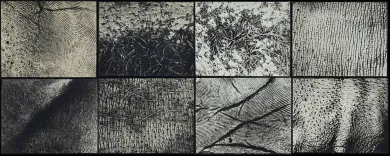
The (legal) person and the legal form. Chapter II
8, 12, 15 January, 2026 – 16:00 to 19:00
As part of the Studies Constellation, the Study Directoship’s annual fellowship, art historian and theorist Sven Lütticken leads the seminar The (Legal) Person and the Legal Form: Theoretical, Artistic, and Activist Commitments to foster dialogue and deepen the hypotheses and questions driving his research project.
This project, titled Unacting Personhood, Deforming Legal Abstraction, explores the dominance of real abstractions—such as exchange value and legal form—over our processes of subjectivation, and asks how artistic practices can open up alternative ways of representing or performing the subject and their legal condition in the contemporary world.
The seminar consists of eight sessions, divided into three chapters throughout the academic year. While conceived as non-public spaces for discussion and collective work, these sessions complement, nourish, and amplify the public program of the Studies Constellation.
In this second chapter of the seminar, the inquiry into the aesthetics and politics of legal form continues with three sessions that pick up the discussions held in Chapter I but propose new lines of flight. The first session focuses on international law via the writings of the British author China Miéville, which allows us to reconsider the notion of the legal form –following Evgeny Pashukanis— and, through it, a variety of (people’s) tribunals. While the crucial concept of the legal person –as the right-holder central to the form of law— was debated in Chapter I, the second session focuses on attempts to extend personhood not (just) to corporations, but rather to nonhuman animals or ecosystems. Finally, the third session poses the question: how can groups and networks use officially recognized organizational forms (such as the foundation or the cooperative) and/or use a collective persona (without necessarily a legal “infrastructure” to match) to act and represent themselves?

Oliver Laxe. HU/هُوَ. Dance as if no one were watching you
Tuesday, 16 December 2025 – 7pm
As a preamble to the opening of the exhibition HU/هُوَ. Dance as if no one were watching you, film-maker Oliver Laxe (Paris, 1982) engages in conversation with the show’s curators, Julia Morandeira and Chema González, touching on the working processes and visual references that articulate this site-specific project for the Museo Reina Sofía. The installation unveils a new programme in Space 1, devoted from this point on to projects by artists and film-makers who conduct investigations into the moving image, sound and other mediums in their exhibition forms.
Oliver Laxe’s film-making is situated in a resilient, cross-border territory, where the material and the political live side by side. In HU/هُوَ. Dance as if no one were watching you, this drift is sculpted into a search for the transcendency that arises between dancing bodies, sacred architectures and landscapes subjected to elemental and cosmological forces. As a result, this conversation seeks to explore the relationship the piece bears to the imagery of ancient monotheisms, the resonance of Persian Sufi literature and the role of abstraction as a resistance to literal meaning, as well as looking to analyse the possibilities of the image and the role of music — made here in collaboration with musician David Letellier, who also works under the pseudonym Kangding Ray — in this project.
These inaugural conversations, part of the main working strands of the Museo’s Public Programmes Area, aim to explore in greater depth the exhibition narratives of the shows organised by the Museo from the perspective of artists, curators and specialists.
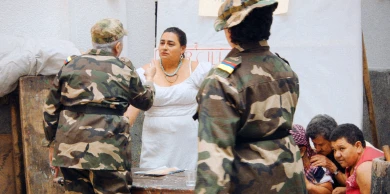
Manuel Correa. The Shape of Now
13 DIC 2025
The Shape of Now is a documentary that explores the challenges and paradoxes of memory, reparation and post-conflict justice, extending a defiant and questioning gaze towards the six-decade armed conflict in which the Colombian State, guerrillas and paramilitary groups clashed to leave millions of victims in the country. The screening is conducted by the Aesthetics of Peace and Desertion Tactics study group and includes a presentation by and discussion with the film’s director, Manuel Correa.
The film surveys the consequences of the peace agreements signed in 2016 between the Colombian State and the FARC guerrilla organisation through the optics of different victims. It was recorded shortly after this signing, a time in which doubts lingered over the country’s future, with many groups speculating in the narration. Correa harnesses the power of images, visual and bodily memory, fiction and re-staging as tools for understanding the conflict, memory and healing, as well as for the achievement of a just peace that acknowledges and remembers all victims.
The activity is framed inside the research propelled by Aesthetics of Peace and Desertion Tactics, a study group developed by the Museo’s Study Directorship and Study Centre. This annual group seeks to rethink, from a theoretical-critical and historical-artistic perspective, the complex framework of concepts and exercises which operate under the notion of pacifism. A term that calls on not only myriad practices ranging from anti-militarism and anti-war movements to activism for non-violence, but also opens topical debates around violence, justice, reparation and desertion.
Framed in this context, the screening seeks to reflect on propositions of transitional and anti-punitive justice, and on an overlapping with artistic and audiovisual practices, particularly in conflicts that have engendered serious human rights violations. In such conflicts, the role played by audiovisual productions encompasses numerous challenges and ethical, aesthetic and political debates, among them those related to the limits of representation, the issue of revictimisation and the risks involved in the artistic commitment to justice. These themes will be addressed in a discussion held after the session.
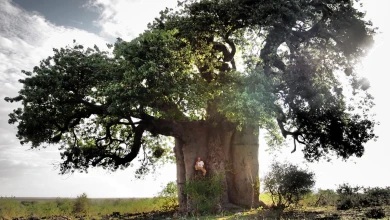
Francisco López and Barbara Ellison
Thursday, 11 December - 8pm
The third session in the series brings together two international reference points in sound art in one evening — two independent performances which converse through their proximity here. Barbara Ellison opens proceedings with a piece centred on the perceptively ambiguous and the ghostly, where voices, sounds and materials become spectral manifestations.
This is followed by Francisco López, an internationally renowned Spanish sound artist, who presents one of his radical immersions in deep listening, with his work an invitation to submerge oneself in sound matter as a transformative experience.
This double session sets forth an encounter between two artists who, from different perspectives, share the same search: to open ears to territories where sound becomes a poetic force and space of resistance.
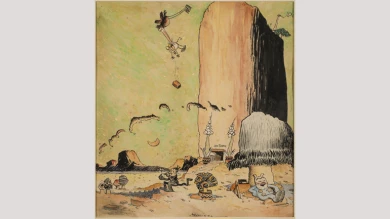
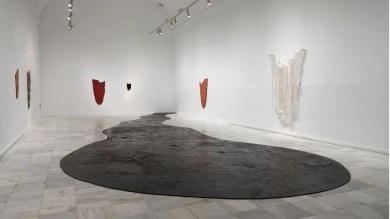
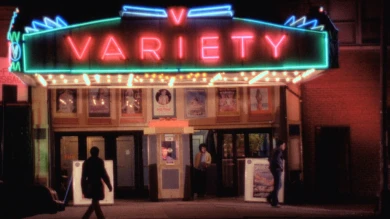
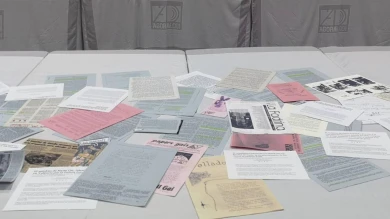
![Miguel Brieva, ilustración de la novela infantil Manuela y los Cakirukos (Reservoir Books, 2022) [izquierda] y Cibeles no conduzcas, 2023 [derecha]. Cortesía del artista](https://recursos.museoreinasofia.es/styles/small_landscape/public/Actividades/ecologias_del_deseo_utopico.jpg.webp)
![Ángel Alonso, Charbon [Carbón], 1964. Museo Reina Sofía](https://recursos.museoreinasofia.es/styles/small_landscape/public/Actividades/perspectivas_ecoambientales.jpg.webp)